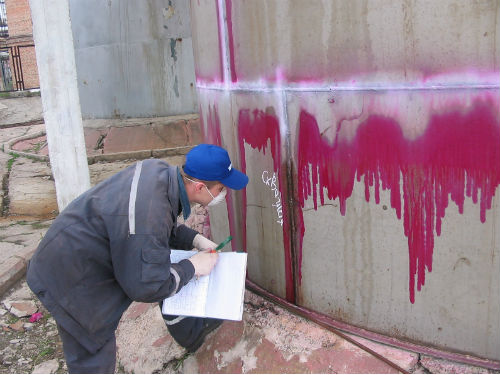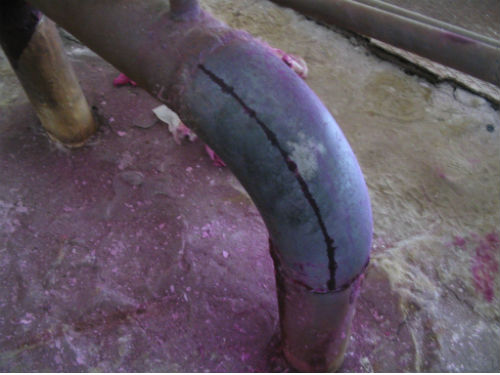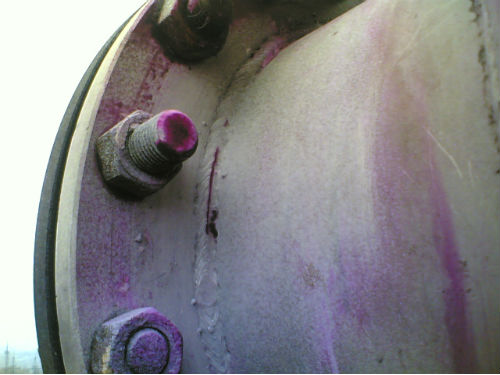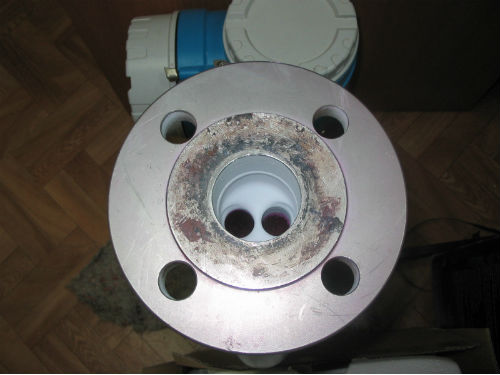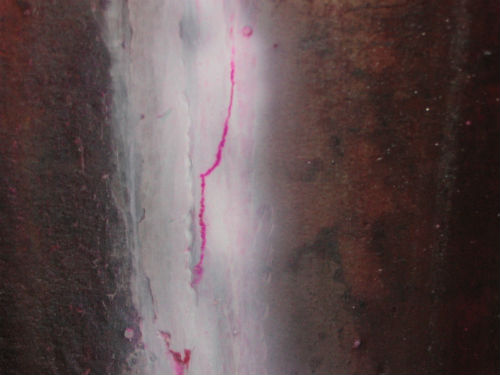Penetrant testing is designed to detect defects emerging on the surface of controlled objects including cracks, pores, cavities, lack of welding, with the possibility of 100% of the control surface without destroying it.
In carrying out penetrant testing can be distinguished five stages:

1 – preliminary cleaning of surface.
To dye can penetrate into the defects, surface must first be cleaned with water or an organic detergent. All pollutants (oil, rust, etc.) any coating (LPC metallization) must be removed from the controlled area. Thereafter, the surface is dried, no water or purifier left inside the defect.

2 – application of penetrant.
Penetrant, typically red in
color, is applied onto the surface by spraying, brushing or dipping facility to
control bath, for a good and complete impregnation of the penetrant coating. Typically,
at 5 ... 50 ° C, for a time of 5 ... 30 min.
Appropriate defectoscopic sets
allow control at low temperatures: penetrant Sherwin LPT-82, cleaner Sherwin
N-120, the developer Sherwin D-106 at a temperature of -30 ... +10 ° C,
penetrant Rot 3000 HELLING applied at a temperature -10 ... +50 °C,

3 - removal of excess penetrant.
The excess penetrant is removed by wiping a cloth washing water purifier or the same as the pre-treatment step. In this case the penetrant must only be removed from the surface, but not from the defect cavity. The surface is then dried lint-free cloth or an air jet.
 .
.
4 – application of developer.
Immediately after drying a thin even layer of the developer is applied on the surface (usually white to a larger contrast).

5 - check.
10 minutes after the application of developer, measurement is performed fixing all indications that emerged on the test object.
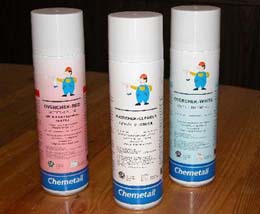

at a temperature +10…+50°С

at a temperature -30…+10°С.
Examples:
